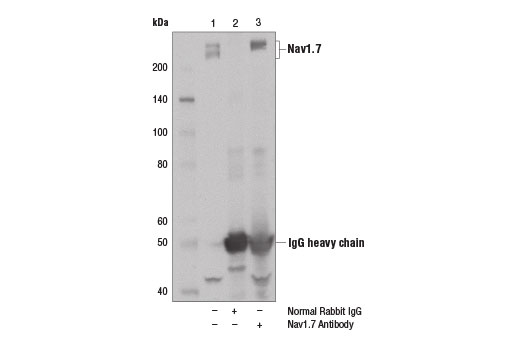

We confirm that conditional deletion of NaV1. 37,79 Nav1.7 expression and Na+ current also correlate with metastatic. Loss-of-function mutations in patients lead to congenital indifference to pain, though it remains unclear where on the way from sensory terminals to central nervous system the signalling is disrupted. This article is part of a themed issue on Structure Guided Pharmacology of Membrane Proteins (BJP 75th Anniversary). According to the manufacturer’s instructions, we first used tyramide signal amplification (TSA) kits (PerkinElmer, NEL701A001KT, 1:50) to probe Nav1.7 (Proteintech Group, 20257-1-AP, 1:3,000) on the spinal cord sections, then incubated the rabbit antibodies against FOS (Abcam, ab190289, 1:1,000). The sodium channel NaV1.7 contributes to action potential (AP) generation and propagation. argenx engineers first-in-class therapies for rare diseases where underserved patients need breakthroughs and the healthcare community needs options. Selectivity against Nav1.4 and Nav1.5 also persisted, but was reduced largely due to the Nav1.7 potency decrease Citation 64. Our pipeline starts with strong science aimed at translating immunology breakthroughs into differentiated medicines. Finally, we discuss possible reasons why the pain-free state seen in humans with CIP has been so difficult to replicate pharmacologically. Nav1.7 activity was maintained in conjugates but caused 7- to 230-fold right-shifts in potency relative to GpTX-1, with multivalent molecules being more potent than monovalent ones. In this review, we summarise the role of the Na V1.7 channel in nociception, its history as a therapeutic target and the quest to develop potent inhibitors of this channel. As Nav1.7 is considered one of the most attractive targets for relieving chronic pain, scientist have paid a lot of effort to look for a selective inhibitor of Nav1.7. However, there are very few examples where these inhibitors have yielded effective analgesia in preclinical pain models or human clinical trials. Pharmacologically, this mission has been highly successful, leading to a number of highly potent and selective inhibitors of Na V1.7 channels. In the subsequent 15 years there was a rush to develop selective inhibitors of Na V1.7 channels with the goal of producing broadly effective analgesics without the problems of addiction and tolerance associated with opioids. In 2006, humans with a congenital insensitivity to pain (CIP) were found to lack functional Na V1.7 channels.


 0 kommentar(er)
0 kommentar(er)
